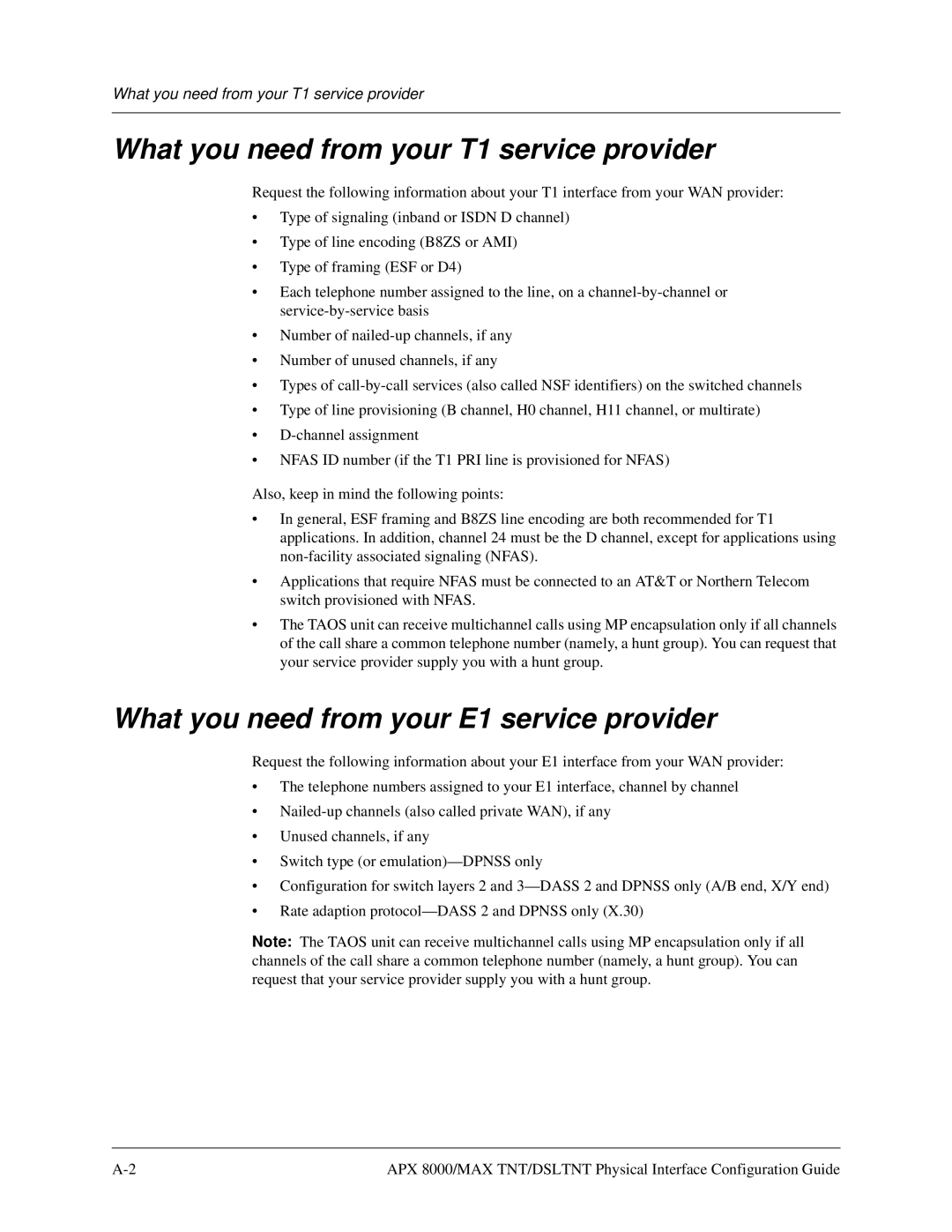
What you need from your T1 service provider
What you need from your T1 service provider
Request the following information about your T1 interface from your WAN provider:
•Type of signaling (inband or ISDN D channel)
•Type of line encoding (B8ZS or AMI)
•Type of framing (ESF or D4)
•Each telephone number assigned to the line, on a
•Number of
•Number of unused channels, if any
•Types of
•Type of line provisioning (B channel, H0 channel, H11 channel, or multirate)
•
•NFAS ID number (if the T1 PRI line is provisioned for NFAS)
Also, keep in mind the following points:
•In general, ESF framing and B8ZS line encoding are both recommended for T1 applications. In addition, channel 24 must be the D channel, except for applications using
•Applications that require NFAS must be connected to an AT&T or Northern Telecom switch provisioned with NFAS.
•The TAOS unit can receive multichannel calls using MP encapsulation only if all channels of the call share a common telephone number (namely, a hunt group). You can request that your service provider supply you with a hunt group.
What you need from your E1 service provider
Request the following information about your E1 interface from your WAN provider:
•The telephone numbers assigned to your E1 interface, channel by channel
•
•Unused channels, if any
•Switch type (or
•Configuration for switch layers 2 and
•Rate adaption
Note: The TAOS unit can receive multichannel calls using MP encapsulation only if all channels of the call share a common telephone number (namely, a hunt group). You can request that your service provider supply you with a hunt group.
APX 8000/MAX TNT/DSLTNT Physical Interface Configuration Guide |
